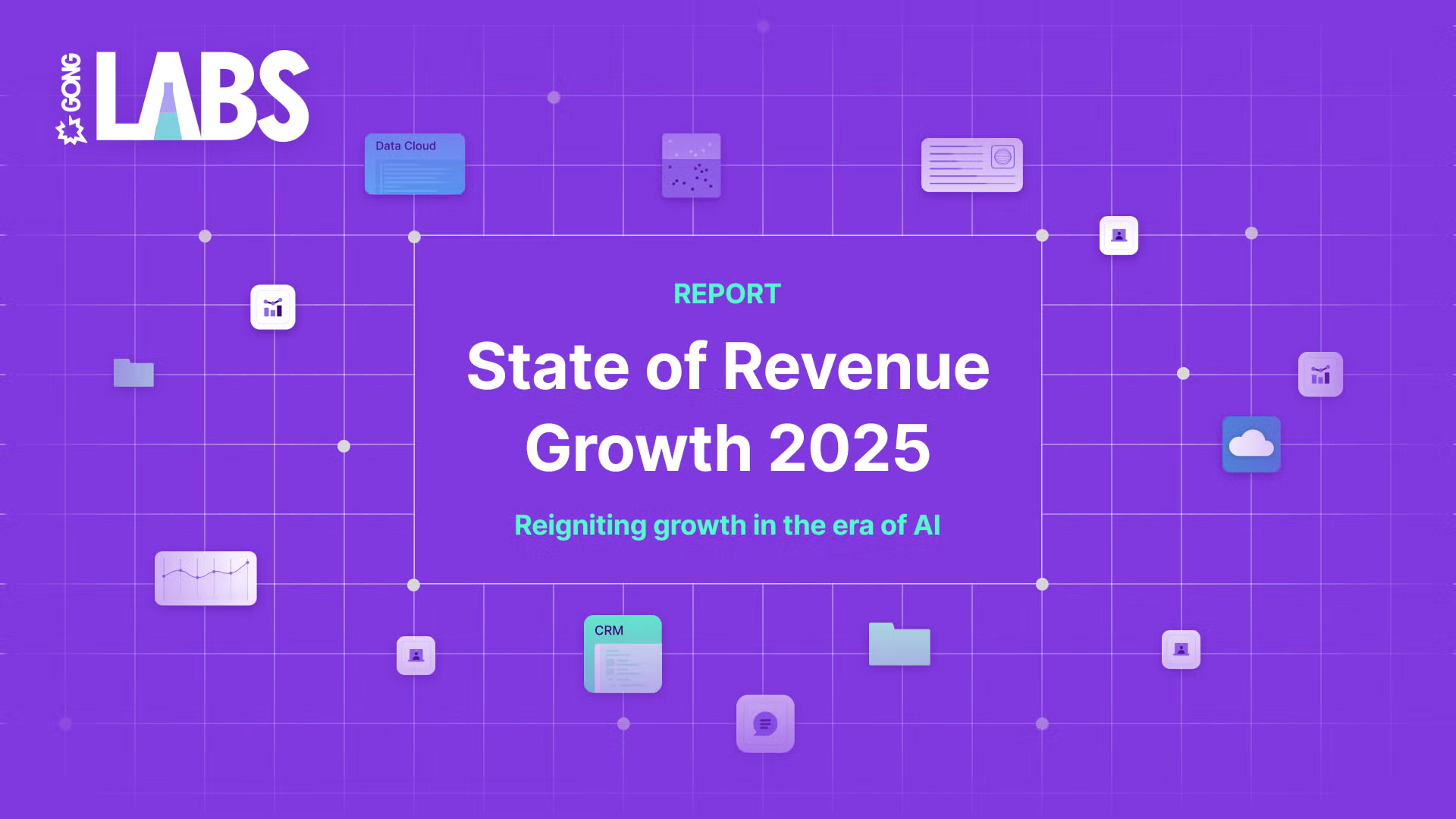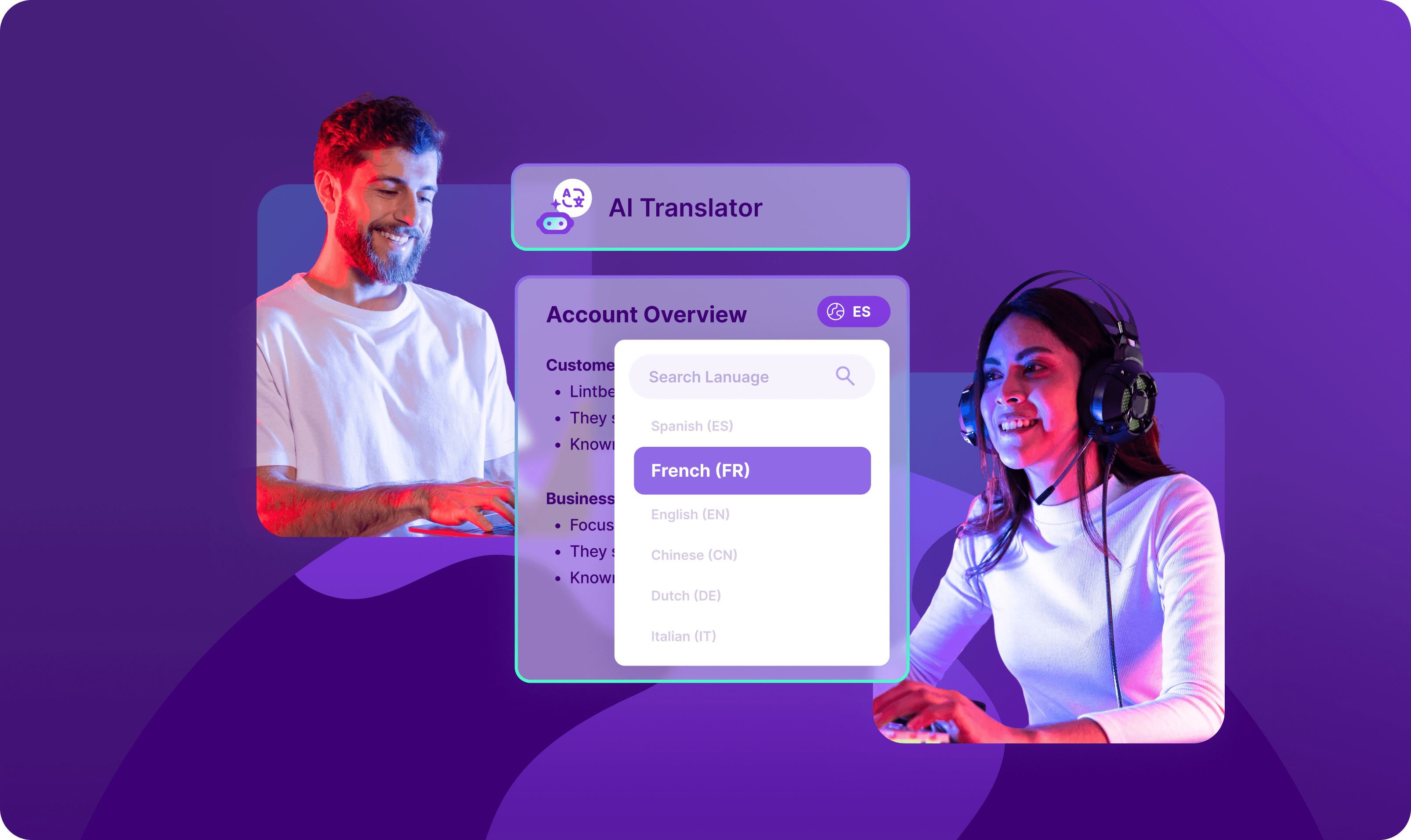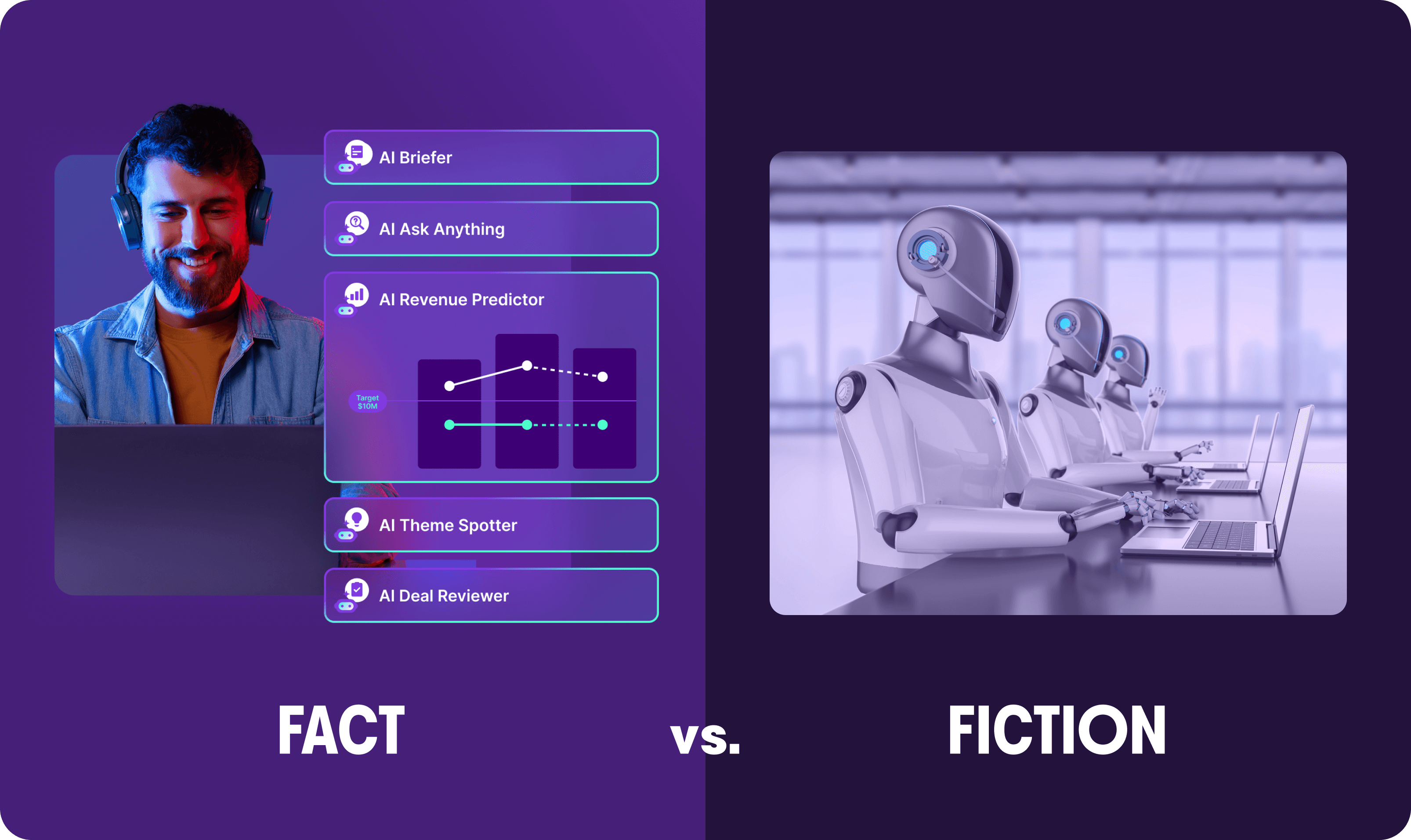Revenue AI
What revenue organizations getting the most value from AI do differently

Craig Hanson
Sr. Director, AI Market Strategy
Published on: September 15, 2025

Every CRO, CIO, and Head of RevOps I talk to is being told that AI is the answer to everything. But a lot of what’s in the market today isn’t getting us closer to the outcomes we need. Sure, AI can summarize a call or draft an email. But does it tell us if a deal is truly at risk? Does it give us confidence in the forecast? Does it show if our team is executing behaviors that win? That’s the ground we’ve got to gain.
On the surface, it can seem easier to lean on public horizontal LLMs, or the AI that’s bundled into the CRM. Those options can be useful in certain situations, but they don’t address the foundations that make AI effective for running an entire revenue organization’s core workflows.
In my work with revenue teams, I consistently see four foundational requirements that make AI effective at scale:
- Holistic data
- Purpose-built AI
- Embedded AI
- Unified platforms
If we measure ourselves against these, AI stops being an add-on and becomes the operating layer for growth.
1. Holistic: Your AI is only as good as your data
The outcomes we want from AI — sharper forecasts, stronger pipeline coverage, healthier win rates — all depend on the quality and depth of the data underneath. If it’s scattered, siloed, or incomplete, even the smartest AI will underdeliver.
Most organizations overestimate the completeness of their data. If AI only sees what’s in the CRM — essentially the info manually inputted by reps — it might highlight stagnation in stages, number of calls or email volume, but it can’t tell whether the quality of those interactions signals progress or risk.
Maximum value comes when AI draws from the full picture. That means going beyond CRM records or activity counts — five calls, ten emails — to the full content and context of those interactions. Every conversation, customer touchpoint, or market signal flows in automatically. When operational, customer, market, and interaction data live in one place, AI can interpret patterns that no team could stitch together manually. That’s what makes predictions sharper and team guidance and outcomes more reliable.
The real test: If AI had to forecast or flag pipeline risk tomorrow, would its understanding only come from what’s typed into CRM fields and activities, or the fullest range of automatically captured data?
2. Purpose-built: General AI only gets you so far
Quick wins like drafting emails or summarizing documents are useful, but they won’t transform a revenue organization. General-purpose platforms — the broad, public horizontal LLMs most people recognize and use frequently — are powerful for breadth and flexibility, but not built to understand the specific context of our industries and sales motions.
Purpose-built models are. Designed specifically for revenue use cases, they’re trained to understand what really matters: how customer interactions map to buyer goals, how rep behaviors align with best practices, and how momentum (or risk) shows up in a sales cycle. And when those models are trained on our own conversations, signals, and workflows they get even sharper at flagging at-risk accounts, highlighting winning behaviors, and pointing to the right next steps. Precision only comes if AI is tuned to the specifics of our business, not just the general web.
The real test: To what extent is our AI built for our unique revenue context and able to learn from our own data — conversations, transactions, outcomes?
3. Embedded: AI belongs where work happens
Treating AI as a “guide on the side” won’t deliver maximum value. General-purpose models are great for quick answers, summaries, or one-off analyses, but stepping outside core workflows to use them slows momentum and doesn’t move pipeline or deals forward.
The real impact comes when AI is woven directly into revenue workflows. It brings insights and guides next steps at the exact moment we need them without interrupting the rhythm of our work. Embedded AI doesn’t ask us to change where we work; it meets us where we are, and powers decisions in the background.
This is why AI has to live inside the applications where we prospect, manage deals, coach teams, and forecast the business. When it’s embedded, it’s not a sidekick but an operating layer for the entire revenue organization.
The real test: Does our AI deliver insights and next-best actions in the moment, or do we have to go hunting for them?
4. Unified: One view of reality instead of insights silos
Many organizations still stitch together point solutions for different stages of the sales process — one for deal execution, another for engagement, another for forecasting. Each may work on its own, but the result is fragmented data and siloed insights that never add up to the whole picture. We are stronger with the fewest platforms possible. By unifying products into a single platform, data flows seamlessly across the entire sales process. AI can draw on that connected data to deliver better recommendations across the entire flow of work. Insights stay consistent, and actions carry forward from stage to stage. This matters more than ever because, as we’ve already established, AI is only as effective as the data and understanding it’s built on.
When we unify platforms, the impact compounds. Actions reinforce each other. And the AI we rely on becomes a trusted operating system for the revenue organization, not a patchwork of partial answers.
The real test: Can our AI make sense of the entire revenue process, or only the slice of data it can see?
Benchmark and close the gaps
These four foundations are a benchmark for whether or not AI can realize its fullest capabilities for driving revenue. If we can answer “yes” to questions like:
- Do we have holistic, quality data?
- Are our models highly specialized?
- Is AI embedded where we actually work?
- Are our platforms unified?
Then we’re positioned to unlock AI’s transformational effect on revenue growth — forecasting far more confidently, winning more consistently, and scaling more efficiently.
If not, those are the gaps to close. Without nailing these foundations, AI can’t deliver the outcomes we’re all banking on.

Sr. Director, AI Market Strategy
Craig Hanson is an AI strategy and growth leader with deep experience in go-to-market, corporate development, and venture capital.
At Gong, he has helped shape the company’s AI platform strategy, drive international expansion, and guide transformative customer growth.
Craig is also a former VC investor with a proven track record in scaling technology startups.
Discover more from Gong
Check out the latest product information, executive insights, and selling tips and tricks, all on the Gong blog.



